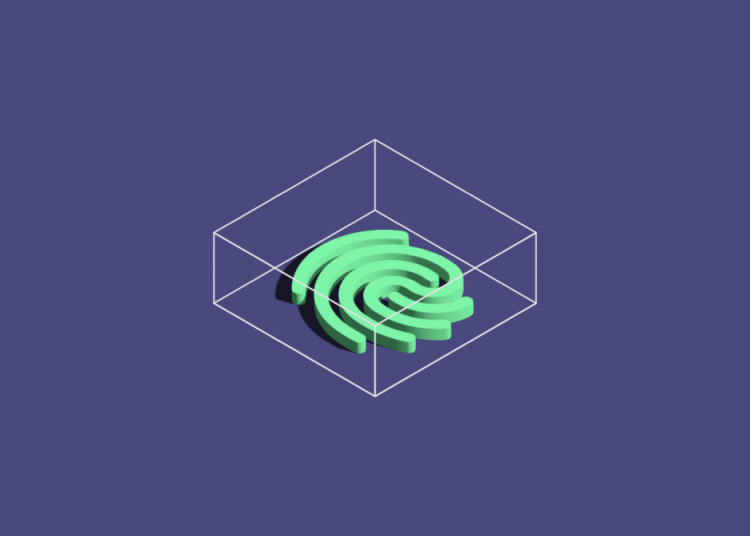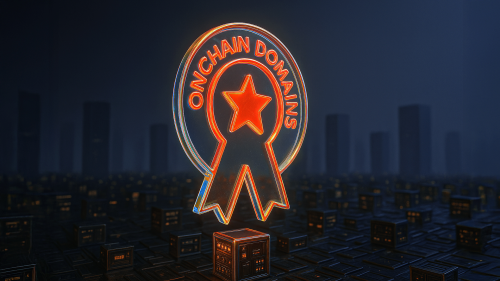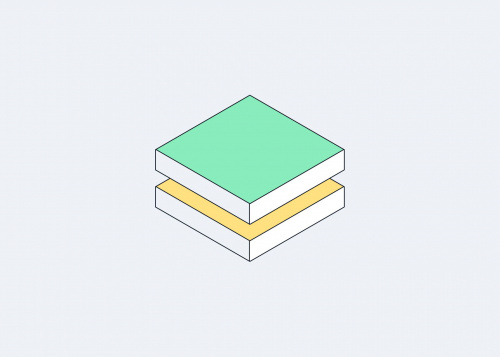A fellow Builders on the block writer tells a story from his time working in Uzbekistan:
“The driver of my organization sits down with me over a cup of tea and asks whether he should get a language degree to help him in his career. Should he get one in English or French, or maybe both?
What, you want to learn two languages?” he asked, to which the driver replied: “No, I just want to buy the diplomas.”
Our dreams, they come in the shape of printed paper. You can study hard for your diploma – or you can order it online and pass it off as real. Both ways are equally popular – half of the new PhDs in the US are fake.
This leaves recruiters with a tough choice. Either they trust someone and take the risk, or they spend a lot of time and money checking certifications and backgrounds. Money for nothing and the PhD for free, one might say.
At the same time, education itself is changing. Lifelong learning recognizes that work happens outside traditional institutions. The Internet makes learning more accessible. And with new technologies and tools come new skill requirements. All of this learning needs to be certified and verified so that we can turn real educational outcomes into economic opportunity.
Blockchain stores who knows what
The original use case for blockchain is to record who owns what. But it will also do a great job recording who knows what.
At its core, a blockchain is a decentralized database. Once we store data (new blocks of information) on many ledgers simultaneously, that data is tamper-proof – forever.
Public blockchains are transparent, but there are features that allow for privacy, which we will touch on later. And because everyone has access to the original database, verifying the integrity of educational data is easy, fast, and cheap. Only if the owner agrees, of course.
When you own and control a learner’s profile on a blockchain account, it ties together all your educational data. And you can access and share that data, your qualifications, with a set of private keys (think of private keys as a password).
In other words, blockchain allows us to create original data that is distinguishable from a copy and that everyone can trust.

Before we dive deeper into blockchain innovations, let’s take a closer look at how the educational landscape is changing.
Challenges and trends in education
Education boosts employment, health, and wealth.

The cost of education is rising
Ironically, poverty is the most pervasive barrier to education. Even in one of the richest countries, the U.S., 38% of high school graduates didn’t enroll in college because of financial constraints.
Between 1989 and 2016, the cost of a four-year college degree in the U.S. doubled, after accounting for inflation. $1.6 trillion in outstanding student loan debt says it all.
To be accessible, education should help working students, single parents, and graduates with diverse career paths manage their time and finances. At the same time, education must adapt to an evolving economy – or, let’s say, a pandemic.
Against this backdrop, we have seen the rise of decentralized massive open online courses (MOOCs).
Agile, affordable, accessible – MOOCs
MOOCs have begun to make high-quality courses from prestigious universities accessible. Learners worldwide can enroll, often for free. They might lack the personal attention and interaction found in traditional classrooms. However, MOOCs offer flexibility and allow learners to study at their own pace.

Because MOOCs are modular, learners can now target specific skills. As a result, MOOCs can adapt to ever-changing skill requirements much more quickly than traditional education.
If these credentials lived on the blockchain, attached to a lifelong learner profile, what would that mean for human resources?
The potential of blockchain credentials

The hyperlink between education and HR
A distributed ledger of education data could streamline the exchange of this data between educational institutions, employers, and learners.
For example, it could help employers effectively match job openings with qualified candidates. Workers could opt into a program that scans their qualifications and micro-credentials to identify potential job matches. All this while keeping their identities private until they decide to share more information.
It almost sounds too good to be true. But is it?
We presented this concept to Clément Frisoni, an HR & recruitment consultant, who identified the bottlenecks of such a system.
“I can definitely see the potential of a system like the one you describe. It would make it much easier to match the right person with the right job.
But there’s a limit to what you can achieve. Learning happens in schools, universities, MOOCs, and, most importantly, on the job. While a school or university might be able to provide some sort of standardized credential for a qualification, there is no universal standard that could define skill mastery, except for some specific skills like language that already exist.
In June 2022, the Council of the European Union published a proposal for a European approach to stackable micro-credentials. Stackable micro-credentials are a framework that allows learners to gain recognition for small achievements, and potentially stack them into a larger certification later.
It also recognizes the diversity of today’s educators, including employers, and validates non-formal and informal learning. It is definitely a step in the right direction. We need to address these issues of recognition and credibility.
But even if we could just guarantee the integrity of formal education, employer records, and MOOC certifications for now, that would be a huge leap forward from what we have today.”
Credential integrity
Clément continues to share the challenges of hiring professionals. “The reality is that few companies do background checks. It takes a lot of time and money, which is usually the reason they don’t do it.
But you can verify the integrity of the employment record, previous salary and education. And if you’re hiring a surgeon, you should. You’d be surprised how many people fix their background.”
What would motivate you to fix your background? The cost of a degree, four years of your time, the urge to get that dream job?
52% of job applicants in Germany and 55% in the US have made false statements about their education. The gap is marginal, even though the cost of education is not. In 2016, the average undergraduate degree in the U.S. cost $104,480 over four years, while 15 of 16 German states have abolished tuition fees at public universities.
A fake college degree on the other hand costs $270 and is instant. Perhaps it is just too easy to get hands on a fake degree in the Web2 world.
Time to take a look at the Web3 tech stack.
The tech stack
Decentralized identifiers
In the context of digital identity, blockchain accounts are also called decentralized identifiers (DIDs). Because public blockchains are permissionless, you can create and control as many DIDs as you want. They can represent people, organizations, or government agencies.
Verifiable credentials
To prove a qualification to someone, a verifiable credential allows you to prove its validity and source. Verifiable credentials are not stored on a blockchain (off-chain) and are not transferable like NFTs or cryptocurrency. However, if someone were to tamper with your credential, you would be able to prove it happened.
Verifiable credentials are an official web standard recommendation of the World Wide Web Consortium.
On-chain attestations
On-chain attestations find their home within smart contracts (autonomous programs that live on the blockchain). These smart contracts, effectively serving as registries, establish a connection between an attestation and a related on-chain DID.
Challenges for blockchain credentials – privacy in Web3

In the discussion of blockchain in education, some argue that a learner profile that follows you for life raises privacy concerns. Before we address those concerns, let’s take a look at current centralized data storage practices.
Tens of thousands of universities around the world run their own servers. Each one is a honeypot of personal information for hackers. Each one must be individually secured. And while resources are being spent, the reality is that universities are failing to do so.
Yale University suffered a data breach that exposed the names and Social Security numbers of 43,000 people through Google searches. The University of California-Berkeley was hacked twice, exposing 160,000 and 80,000 records, respectively. Ohio State University (760,000), Kirkwood Community College (125,000), the University of Maryland (300,000), and many others join the sad list.
In a centralized system, the owner of the server that hosts your data controls your data.
In a decentralized system, private keys give you control over your learner record. You don’t necessarily own it, but with privacy technologies like zero-knowledge-proofs in place, you regain control of your privacy.
Examples of blockchain credentials
Malta pioneers blockchain credentials with Hyland
Malta has pioneered the implementation of blockchain credentials with Hyland. Higher education institutions, skills training and government programs are now issuing graduates with credentials that are immediately usable for job applications.
Maltese learners now have a secure way to store and share their lifelong learning records. Employers can instantly verify the authenticity of credentials, saving time, money, and reputation. At the same time the government gains insight into the dynamics of its education landscape.

The Internet of Education
The Internet of Education (IoE) is a global initiative focused on equitable access to quality education and employment. It creates an agile and responsive education system that allows employers to interact directly with learners and assist in skills development.
IoE’s digital wallet, LearnCard, connects employers, MOOCs and schools, students, universities, recruitment applications and learning management systems. It serves as a Web3 layer to existing Web2 applications. As such, it connects blockchains, cloud infrastructure or traditional server-based systems.
It’s like Lego – great infrastructure is modular
Once verifiable credentials live on the blockchain, recruiters can scan learner profiles, and trust that those credentials are true. Gone are the days of notarization, official seals, and long verification processes.
For learners, education is a matter of access or no access. And on a blockchain, educational data withstands wars, climate disasters, and political censorship. And as such, the most vulnerable will benefit the most from a lifelong, yet private learner profile.
Before this vision becomes a reality, we need to agree on defined standards for skill mastery and digital identity and build user-friendly applications. The good news is that the building blocks seem to be falling into place.
Blockchain won’t disrupt education and recruitment. Instead, it will overcome the challenges of the digital age that we’ve left unaddressed for too long. And in the not-too-distant future, when credentials, and credentials alone, truly define your choices, blockchain will turn educational achievement into economic opportunity.



